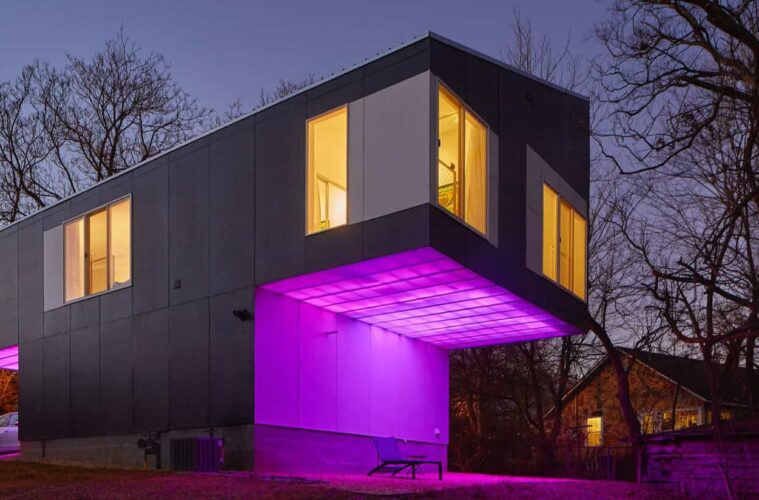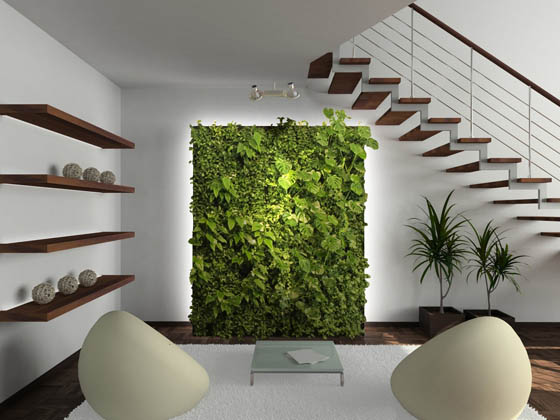The architectural LED facade lighting is the lighting that reshapes the night view of the architecture with lights, which is part of the night view lighting. The purpose is to use the lighting to highlight the architectural features and organically combine with the surrounding environment to create a harmonious, beautiful and distinctive night scene picture.
The application of facade lighting is very common. Facade lighting is used in sports fields, construction sites, squares at stations or terminals, buildings and monuments. Nowadays, more and more facade lighting is not only the function of lighting, but also the nature of advertising or decoration. Here we mainly discuss the architectural facade lighting.
Subjects being illuminated
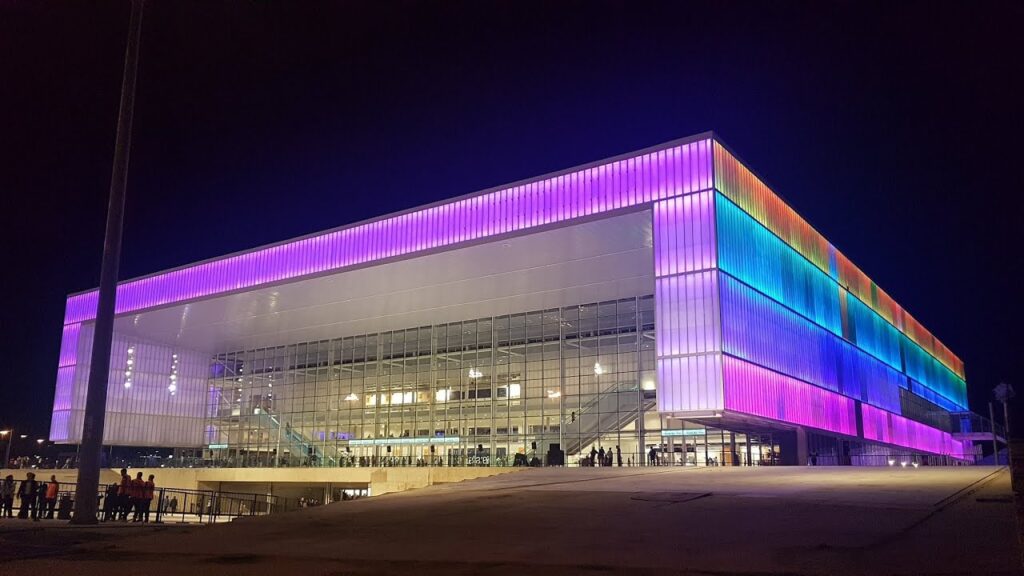
source: pinterest.com
The illuminated objects can be natural objects or scenic spots, and can also be ancient and modern buildings. Here we mainly discuss several types of LED lighting for architectures:
(1) Monuments—they are some castles, churches, theaters, famous public or private buildings with architectural art. Cities with beautiful monuments can use these monuments to attract tourists with the help of floodlighting.
(2) Commercial or industrial buildings- large department stores, banks, office buildings and even factories can use floodlighting to attract people’s attention. The name of the advertisement will let people know what the building is. Even without a name, there will still be advertising effects. Lighting will arouse people’s curiosity. They will stop unconsciously and ask: “Where is this place? Who does it belong to?”.
(3) Special architecture—referred to here are n on-residential buildings, such as bridges, overpasses, towers, dams, etc. In addition to their strong practicability, these buildings also have novel structures, which are of great aesthetic significance.
(4) Artwork—Artwork here refers to sculptures, statues, reliefs, etc.
Classification and application of LED lights for architectural facade lighting
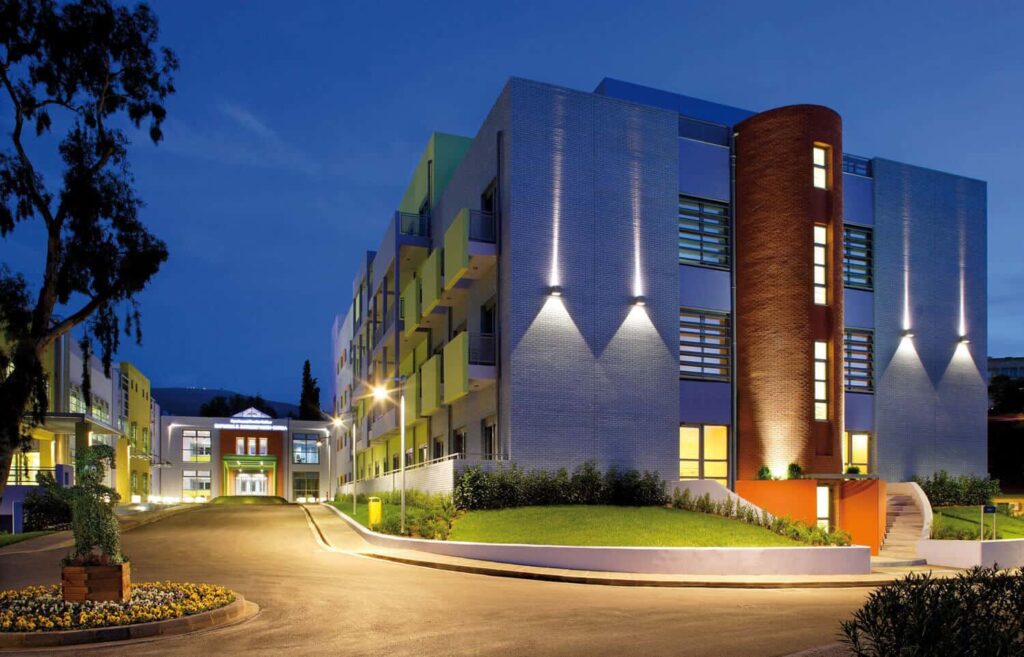
source: ledil.com
LED lighting is an important manifestation of architectural facade lighting. By changing the appearance of the architecture during the day, the architecture can present a completely different scene at night. As an important part of the architectural facade, many factors need to be considered in the selection of lights for the external wall lighting of the architecture to ensure the final effect of the lighting design. What are the types of light sources that are usually selected for facade lighting?
(1) LED point pixel light: As a relatively common form of daily lighting, it has good flexibility and can spread a lot of light sources into the surrounding environment through a single light spot. The led point pixel light is a new type of brightening and decorative LED light with a built-in LED cold light source. The point pixel light source can emit different colors according to needs.
At the same time, it can also have a built-in microcomputer chip, which can be programmed to achieve colorful gradation, jump, scan, flowing water and other full-color effects; it can also replace a certain specification display screen with multiple point light source pixel arrays and modeling combinations, which can change various patterns, texts, animations, and video effects. It is a supplement to the linear light source and floodlighting. It has a beautiful appearance and can meet the design requirements of the point, line and surface of the building and other decorations.
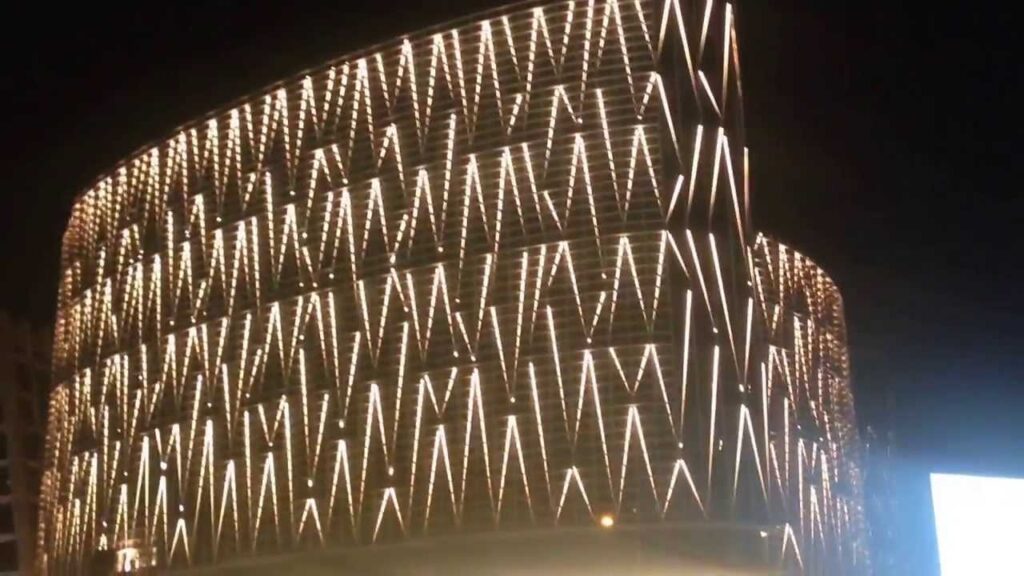
source: pinterest.com
Since the dot matrix screen composed of point light sources also has quite good visual effects when viewed from a long distance, it can meet the long-distance visual needs of large advertisements; therefore, LED point pixel lights are widely used in the production of large-area building vertex array screens, as well as the exterior of buildings. Brighten the walls on the front, outline the outlines of buildings, bridges and other buildings, brighten decoration and embellishment of parks, rivers, squares, hotels, hotels, KTVs and other large door background signs and interior decoration lighting projects, and other types Lighting occasions for special shaped objects, buildings, etc. At present, the market prospects are relatively good.
(2) LED linear light: As the main tool to outline the outline of the architecture, we regard it as the aggregation of countless point pixel lights. When using linear lights, you can adjust the color and brightness through programming controlled by the build-in chip. The color effect of LED linear lights is very rich. Through color matching, 16 million colors of static display flicker changes can be displayed. Flicker darkens; cross color change: several color temperatures alternately change at a set time interval; chase change: several color temperatures catch up with each other in the set sequence; flow function: a single color temperature cycles regularly according to programming.
LED linear lights are mainly used to highlight the outline of architectures. The lighting effect is better for architectural groups with rich contour lines.
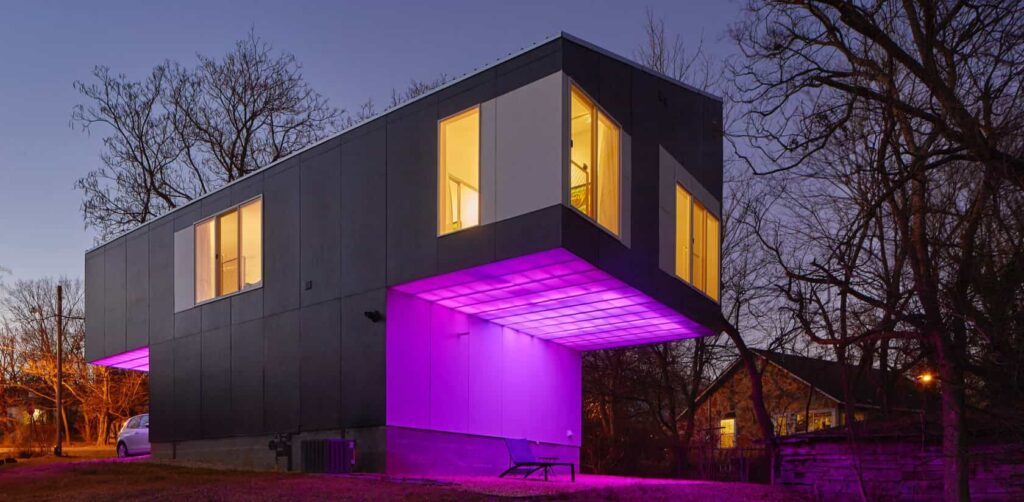
source: architizer.com
(3) LED wall washer light: LED wall washer is a light that can make the light wash the wall like water; it is mainly used for decorative lighting and light effect beautification of architectural projects, such as commercial buildings, hotel clubs, bridges and docks, etc., can also be used to outline the profile of a large architecture. Wall washer, as a commonly used surface light source expression method in architectural facade lighting, is generally set on the top, entrance or line position of the building. Different colors of light will create different environmental atmospheres.
The illumination distance of the wall washer can reach 1~10 meters, which is very suitable for the panoramic flood lighting of internal and external walls such as government lighting projects, commercial places, subways, elevated overpasses, building exterior walls, architectural landmarks, etc.; landscape buildings, outdoor squares, landscape objects and walls, display items, etc. It can fully adapt to various indoor and outdoor temperature and humidity environments. The LED wall washer has a built-in microchip and can be used without a controller. Variety of color effects, can achieve dynamic effects such as gradual change, jumping change, color flashing, random flashing, and gradual alternation. The DMX512 control system can also be used to achieve the effects of chasing and scanning. The wall washer brings a bright visual experience through the combined use of colorful lights and projection angles, and makes people immersed in the romantic and changing light world.
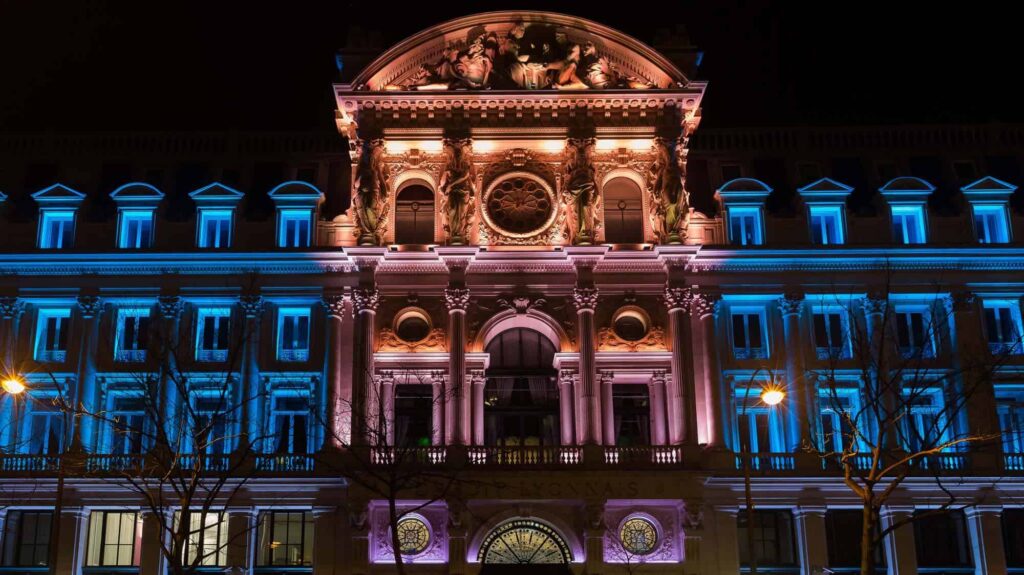
source: linealight.com
(4) Compound light: In the architectural facade lighting, the cases of compound use of “point”, “line” and “surface” are very extensive. This lighting method breaks away from the monotony of the traditional lighting mode, fully combines the lighting needs of the specific environment, maximizes the lighting effect, and has obvious advantages in dynamic lighting.
The LED architectural facade lighting has a very obvious change in the appearance of the architecture. By changing the original color of the architecture, the architecture presents a more unique shape at night, breaking the monotony of day and day, fully showing the characteristics of the architecture itself, and narrowing the distance between people and the architecture.

